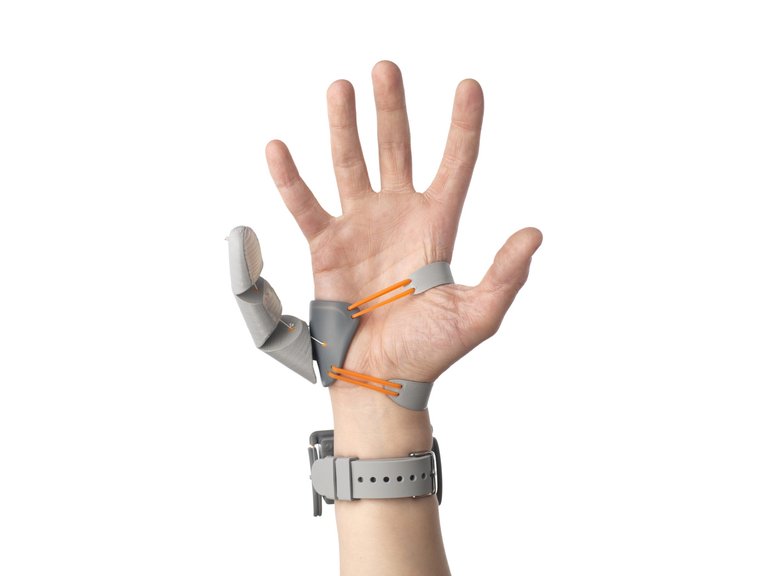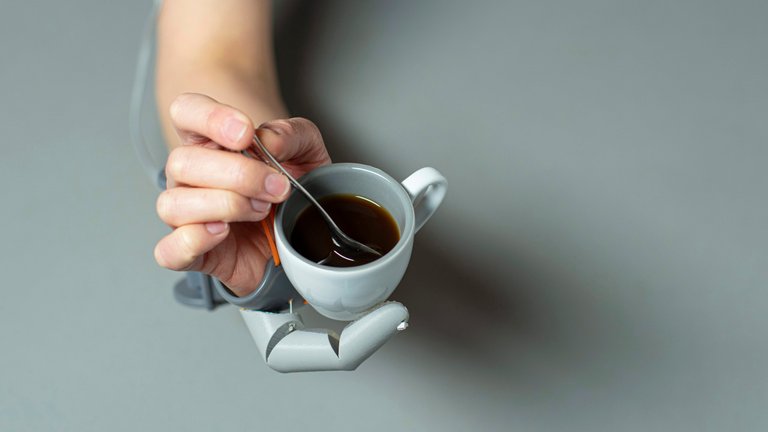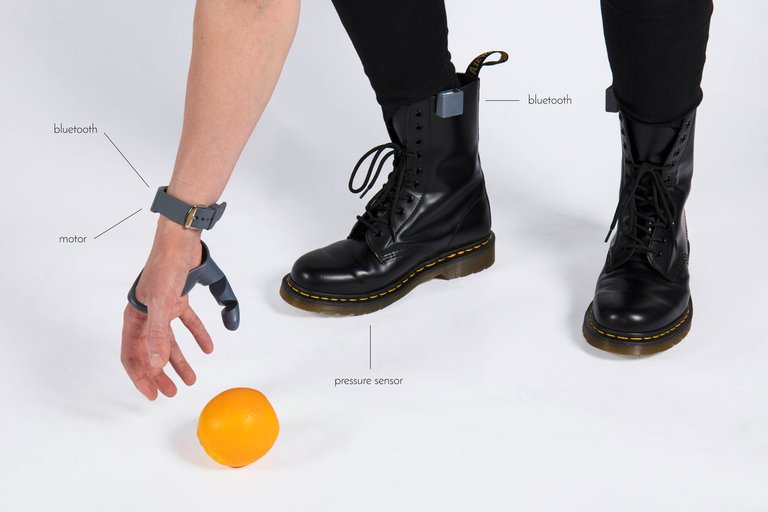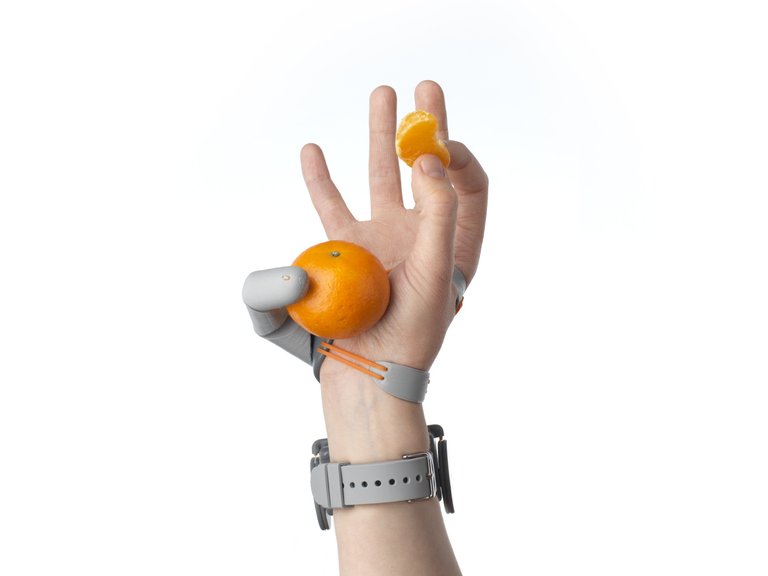This happen when a extra thumb is given to a group of people

The Third Thumb is a device that seeks to reframe the way we view prosthetics and was designed by Dani Clode.
As it is described, it is a part tool, part experience, and part research, from replacing a lost function to an extension of the human body.
Later on Dani was invited to join Professor Tamar Makin's team of neuroscientist at the UCL who were investigating how the brain adapts to an extra thumb.

The Third Thumb is 3D printed for easier modifications and it was designed to be wore on the opposite site of the wearer's actual thumb.
It is controlled with pressure sensors on the feet of the user under the big toes via wireless.

The study involves 20 participants that wear the device over five days, they were told to wear and use the third thumb in daily life scenarios for the period of 6 hours per day. The participants also were compared with another group of 10 people that wore a static version of the thumb.
Towards the end of the study, some participants said that the new thumb started to form part of their bodies. Dani Clode said that they were surprised that some participants started to form a bond with the new thumb, and some needed some time to say goodbye to the thumb and some felt that they lost something.

Designer Dani Clode also said “Our study shows that people can quickly learn to control an augmentation device and use it for their benefit, without overthinking. We saw that while using the Third Thumb, people changed their natural hand movements, and they also reported that the robotic thumb felt like part of their own body.”
“Body augmentation could one day be valuable to society... This line of work could revolutionise the concept of prosthetics, and it could help someone who permanently or temporarily can only use one hand, to do everything with that hand..." said Paulina Kieliba from the UCL Institute of Cognitive Neuroscience.
The researchers, based at UCL and the University of Oxford, were supported by the European Research Council, Wellcome and the Sir Halley Stewart Trust.
Sources: Gizmodo, ScienceRobotics, Dani Clode Designs